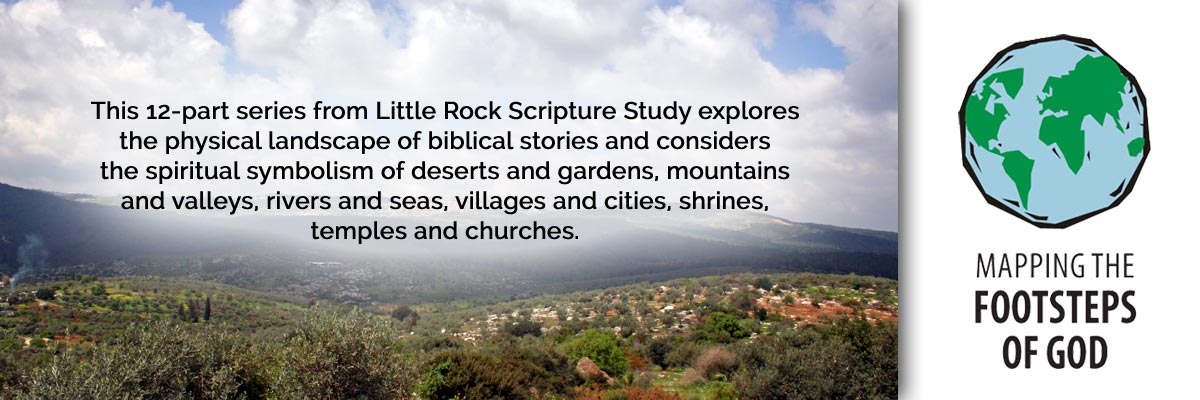Official Website of the
Catholic Diocese of Little Rock
Jesus brought good news to ancient villages
Published: August 16, 2014
This is the eighth column in a 12-part series
By Clifford M. Yeary
Associate Director, Little Rock Scripture Study
Ancient Israel had its cities, like Jerusalem and Shechem, but without most people spending their lives toiling on farms, cities could never feed their concentrated populations. Wherever there was sufficient farmland, there were villages of various sizes, often set on a hill for defensive purposes, where the farm laborers lived.
 Jesus' ministry consistently brought him to the common people of the land. Only John records Jesus visiting Jerusalem three times, the other Gospels describe only one visit. He tended to minister in villages and along the shores of Galilee. In Nazareth, the small, northern farming village of his youth, the population may have only amounted to 200-300 people.
Jesus' ministry consistently brought him to the common people of the land. Only John records Jesus visiting Jerusalem three times, the other Gospels describe only one visit. He tended to minister in villages and along the shores of Galilee. In Nazareth, the small, northern farming village of his youth, the population may have only amounted to 200-300 people.
After his baptism in the Jordan, Jesus and his disciples made the fishing village of Capernaum the hub of his activity (Matthew 4:13). It was there in the home of Peter that Jesus healed Peter's mother-in-law. In modern Capernaum (Kfar Nahum), what is believed to be the foundation of that house can be viewed within the walls of the Church of St. Peter's House.
According to John 2:1-11, in the not too distant village of Cana, Jesus performed his first miracle, turning water into wine at a wedding. Later, he would heal a royal official's son there (John 4:46-53). In John 21:2 we learn that Cana was the home of Nathanael, whom tradition identifies with the apostle Bartholomew. Bethany was the village home of three of Jesus' closest friends, Mary and Martha and their brother Lazarus, whom Jesus raised from the dead (John 11:1-43).
Throughout the villages of the Holy Land, lives centered on planting and harvesting or the seasonal trials of fishing. The daily struggles of a father would be the life a son could expect. As a mother spent her life, so a daughter would expend her own.
In farming villages, sheep would be pastured in higher ground, away from farmland, but many farm animals would be kept inside the owners' houses. These houses were typically flat roofed, and in the south tended to be made of mud caked walls ribbed with wooden poles and wrapped around a series of stone pillars running through the center of the house. It was not uncommon for larger households to have a second story.
An ancient limestone tablet found in Gezer, believed to be a school exercise, divides a 12-month calendar into eight agricultural seasons. According to William F. Albright's translation, these seasons are the olive harvest, the sowing of grain, another for a later planting, followed by the "hoeing up of flax," the barley harvest, a month of feasting that follows the harvest, two months for tending vines, and culminate with a month for enjoying summer fruit.
What the school lesson does not teach, however, is how to cope during swarms of crop-stripping locusts or harvest-killing droughts. During military invasions, what crops the armies didn't steal for themselves they would burn to prevent their enemies from eating.
Life in villages could be precarious, but where the Torah (Old Testament Law) was taught and respected, there were weekly respites in observing the Sabbath. By New Testament times, villages of sufficient size would have a synagogue where Sacred Scripture would be read aloud, God would be praised from the Psalms and religious instruction given to the faithful.
From that religious instruction many began to yearn for a different future for themselves. Biblical narratives of creation, of the Exodus, the tragedy of the exile, followed by the lavish but unfulfilled promises made to those who returned to their homeland, gave them not just a sense of history, but a yearning for a future far different from the cycle of life to which they were yoked like oxen endlessly turning a millstone.
Imagine sitting in Nazareth's synagogue, hearing that local carpenter's son read from the beautiful but as yet unrealized promises in Isaiah of liberty, healing, vision and the end of oppression. Imagine him proclaiming, "Today this Scripture passage is fulfilled in your hearing" (Luke 4:16-21).
Study Questions
- What personal connections (friends, family or history) do you have to small town living or farm life?
- What about village life in ancient Israel helped promote a cyclical view of life and history among the people?
- How did the Bible help the Jewish break away from an entirely cyclical view of life and history?
- Why would both the message's content and the messenger have been difficult for the people in Nazareth's synagogue to accept?
This article was originally published in Arkansas Catholic Aug. 16, 2014. Copyright Diocese of Little Rock. All rights reserved. This article may be copied or redistributed with acknowledgement and permission of the publisher.




